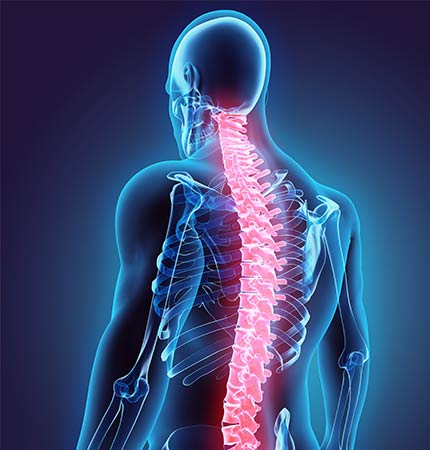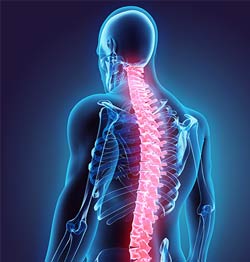How Does Opioid Pain Medication Reduce Pain?
One of the things we long to be free of is pain. Regardless of the source, pain impedes the positive aspects of life, restricts our options, and causes illness. Opioids are used to treat severe pain in the short term following surgery, injury, or chronic pain. Dr. Andrew Morchower, our board-certified doctor offers opioid pain medication at OmniSpine Pain Management. For more information, contact us today or book an appointment online. Our clinics are located in Frisco, TX, Sunnyvale, TX, and Mesquite, TX.


Table of Contents:
What is an Opioid Pain Medication?
What are the most common Opioid medications?
How Does Opioid Medication Relieve Pain?
How Many Opioid Receptors Does the Human Body Have?
Pain has accompanied human beings since their emergence on Earth. Shamans and healers have used opioid plant products to relieve pain for millennia. Approximately 5,000 years ago, Sumerians recorded the analgesic properties of opium poppy. Before the 19th century, the primary anesthetics used during surgery were alcohol, opium tinctures, and other plants. Remarkably, in 1784, a surgeon discovered that opium had exceptional effects on postoperative pain relief. After the isolation of morphine, the main opium active ingredient in 1803, opioid drugs became the painkiller gold standard. However, only during the last 50 years have doctors understood how opioid pain medication reduces pain.
Opioids are a group of pain medications or analgesics prescribed to reduce moderate to severe pain. Opioid medications can be made synthetically in the lab, such as heroin, methadone, and fentanyl, or naturally from opium poppy plants, i.e. morphine, codeine, papaverine, and thebaine. Furthermore, semisynthetic opioids are created by manipulating natural opioids in a lab to increase desirable characteristics while lowering others, E.g., diamorphine (heroin), dihydromorphine, buprenorphine, and oxycodone.
Opioids are also known as alkaloids, opiates, painkillers, or narcotics. Although during the last decade, doctors reduced 44.4% of opioids used, 6.5% of Americans 18 years or older are under opioid prescription.
• Buprenorphine
• Codeine
• Fentanyl
• Heroin. It was the first synthetic opioid. Nowadays, it is an illegal street drug
• Hydrocodone
• Hydromorphone
• Methadone
• Morphine
• Oxycodone
• Oxymorphone
• Tramadol
Opioids relieve pain by attaching themselves to specific proteins called receptors, almost identical to a key that binds to a lock to open it. Of course, opioid receptors are opioid-specific and only function when the proper ligand or opioid molecule binds to them. Nerve cells have opioid receptors, most notably in the brain, spine, guts, and skin. Remarkably, there is a high concentration of opioid receptors in pathways that transmit pain perception to the cerebral cortex or the pain-producing neurons, such as the lateral parabrachial nucleus and dorsal raphe. Consequently, opioids bind to the nerve cell receptor, inactivating the nerve cell.
How Opioids Make Pain Go Away or How Opioids Reduce Pain
• First, the person injects or takes opioids by mouth.
• Second, opioids enter the bloodstream and attach themselves to opioid receptors throughout the body. Nerve cells have opioid receptors.
• Third, on the impacted nerve cells, opioids temporarily inhibited the generation and propagation of nerve impulses.
• Fourth, targeted nerve cells reduce or stop firing or sending pain signals to the brain.
• Finally, after the opioids wear off, the ability of nerve cells to produce and send pain signals returns.
Unfortunately, the temporal nerve cell impairment affects other physiological processes, leading to unintended consequences or side effects.
There are now five major classes or types of opioid receptors known to exist, with numerous subclasses within each class. Moreover, the names assigned to each class may change based on the research team or scholars characterizing them. It is paramount to know that endorphins, which are secreted by the human body, and morphine bind to Mu receptors.
Opioid Pain Medication Benefits
• Analgesia. Extraordinary pain relief in moderate and severe pain
• Fast action
• Stress relief, decreasing emotional and psychological stress while ameliorating flight or fight response
• Mood booster. Opioids may improve mood and cause euphoria initially.
• Patients can learn to use the minimum dose to get pain relief or use opioids as the latest resource for pain management.
Opioid Pain Medication Side Effects
• Addiction. Opioids are highly addictive.
• Physical dependence. After using opioids continuously for a few weeks, people may feel compelled to consume them with severe cravings and urgencies.
• Sedation
• Nausea and Vomiting
• Constipation
• Respiratory depression that can be fatal
• Tolerance. Opioid chronic user patients may need higher doses to get similar effects.
• Anxiety in long-term opioid users
• Depression in long-term opioid users
• Attempted suicide and suicide risk are more frequent among opioids illegal users.
• Personality disorders
Opioids Pain Medication Addiction Risks
The CDC estimates that 2.7 million Americans who are 12 years of age or older suffer from opioid use disorder. When alternative treatments fail to alleviate severe or chronic pain, opioids are an excellent and legitimate option. However, there is always a chance of opiate misuse, addiction, overuse, abuse, and overdose death. To ensure therapeutic success, patients must follow the doctor’s indications and report any red flags immediately. It is unlikely to get a doctor’s opioid prescription for a life-threatening dose. To emphasize, following your doctor’s indication and taking the treatment as prescribed is the first prevention of opiate misuse and abuse.
At OmniSpine Pain Management, our Pain Doctor and Pain Specialists follow the latest CDC guidelines for Opioid Pain Medication Prescription and Opioid Use Disorder Prevention. Moreover, each pain management plan addresses the patient’s needs, assessing individual risks. Each pain management plan provides the best care while minimizing the risks.
Make your appointment now at OmniSpine Pain Management and discover how our pain Specialist can help you reduce your pain and regain control of your life. Our clinics are located in Frisco TX, Sunnyvale TX, and Mesquite TX. We serve patients from Dallas TX, Frisco TX, Mesquite TX, Sunnyvale TX, Plano TX, Garland TX, Forney TX, Cedar Hill TX, Denton TX, Balch Springs TX, and surrounding areas.





